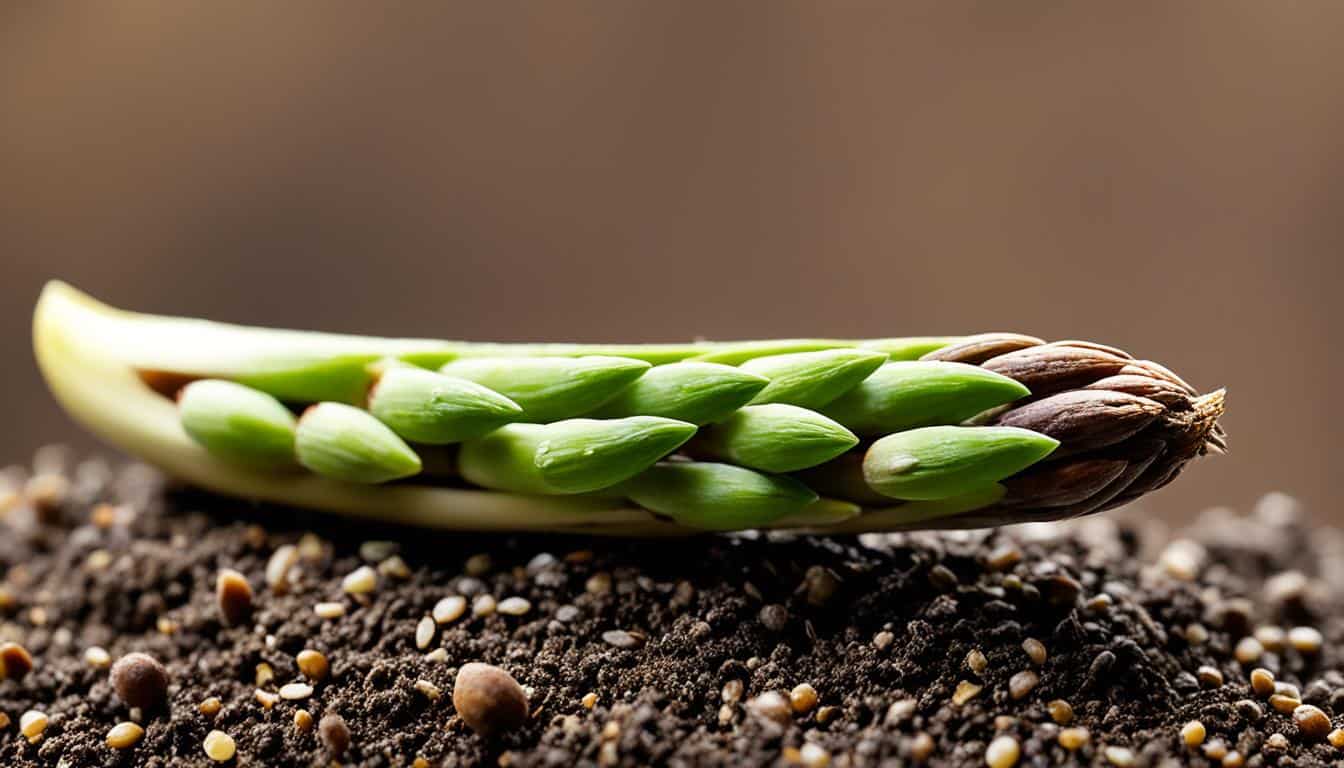When it comes to leafy greens, kale and spinach are often hailed as kings of the vegetable kingdom, packed with essential nutrients and health benefits. These nutrient-rich greens offer a plethora of vitamins, minerals, and antioxidants that can support overall health.
- Kale and spinach are nutrient powerhouses, providing an array of essential vitamins and minerals.
- Kale is higher in vitamin C, while spinach is richer in folate, vitamins A, and K.
- Both greens are low in calories and high in fiber, making them great options for weight loss.
- Both kale and spinach have been linked to improved heart health and protection against chronic diseases.
- It’s important to consume these greens in moderation and prepare them properly to mitigate potential side effects.
Now let’s dive deeper into the nutritional comparison, cooking options, health benefits, and more, to help you make the most informed choices when it comes to incorporating kale and spinach into your diet.
Nutritional Comparison: Kale vs Spinach
Let’s dive into the nutritional profiles of kale and spinach to uncover why they are considered nutritional powerhouses. Both leafy greens offer a wide array of vitamins and minerals that are essential for optimal health.
Kale is packed with nutrients, including high levels of vitamin C, vitamin K, and calcium. It is also a great source of iron, vitamin A, and fiber. In fact, kale contains more vitamin C than spinach, making it a popular choice for boosting the immune system and promoting skin health. Additionally, kale has been shown to have anti-inflammatory properties, making it beneficial for those with conditions like arthritis.
On the other hand, spinach is rich in folate, vitamin A, vitamin K, and iron. It also contains more vitamin K compared to kale. Folate is important for cell growth and development, making spinach an excellent choice for pregnant women or those looking to support healthy brain function. Spinach is also known for its high antioxidant content, which helps protect the body against free radicals and oxidative stress.
Both kale and spinach are low in calories and high in important vitamins and minerals. They are both high in vitamin K and vitamin C, as well as fiber and other micronutrients. Kale contains more vitamin C, while spinach provides more vitamin K, vitamin A, and folate. Incorporating both of these leafy greens into your diet can help ensure you are receiving a wide range of nutrients to support overall health and well-being.
| Nutrient | Kale (1 cup, chopped) | Spinach (1 cup, cooked) |
|---|---|---|
| Vitamin C | 80.4 mg | 8.4 mg |
| Vitamin K | 547 mcg | 604 mcg |
| Vitamin A | 10302 IU | 14187 IU |
| Folate | 19.4 mcg | 146 mcg |
| Iron | 1.1 mg | 3.6 mg |

In summary, both kale and spinach are highly nutritious and can be enjoyed as part of a healthy diet. While kale is richer in vitamin C, spinach has more folate, vitamins A, and K. Including a variety of leafy greens in your meals can provide a wide range of nutrients and contribute to overall health and wellness.
Kale: A Closer Look
Kale’s sturdy leaves and robust flavor make it a versatile ingredient in various dishes, from salads to smoothies and even as a substitute for traditional greens. This nutrient-packed vegetable is not only delicious but also offers a plethora of health benefits. Whether you’re a seasoned chef or new to cooking with kale, there are countless ways to incorporate this leafy green into your meals.
One popular way to enjoy kale is by using it in salads. Its hearty texture holds up well to dressings and other flavorful ingredients. You can mix kale with other greens, add some protein-rich toppings such as grilled chicken or chickpeas, and drizzle it with a tangy vinaigrette for a satisfying and nutritious meal. Alternatively, you can massage the kale leaves with lemon juice to soften them and create a more tender texture.
In addition to salads, kale can be blended into smoothies for a refreshing and nutrient-packed beverage. Pair it with fruits like banana and pineapple to add natural sweetness, and throw in some almond milk or Greek yogurt for a creamy base. Not only does this make for a delicious and filling snack, but it’s also a great way to sneak some extra greens into your diet.
Recipe: Kale and Spinach Stuffed Chicken Breast
“This savory dish combines the flavors of kale and spinach with juicy chicken breast. It’s the perfect option for a healthy and delicious dinner. You can find the full recipe here.”
Lastly, if you have a green thumb, you may consider growing kale in your backyard or garden. Kale is a hardy plant that can withstand colder temperatures, making it a great option for year-round cultivation. It’s relatively easy to grow from seeds or transplants, and with proper care and maintenance, you can enjoy a bountiful harvest of fresh kale leaves.
| Kale Benefits: | Spinach Benefits: |
|---|---|
| High in vitamin C | Rich in folate |
| Good source of vitamins A and K | Abundant in vitamins A and K |
| Low in calories | Low in calories |
| Provides fiber and other micronutrients | Offers fiber and other micronutrients |
Whether you enjoy kale in a salad, a smoothie, or even as a part of a stuffed chicken breast, it’s clear that this leafy green vegetable deserves a place on your plate. Just remember to balance your intake and vary your diet to reap the maximum benefits from this nutritious powerhouse.
Spinach: A Detailed Examination
Spinach, with its delicate leaves and mild taste, is a versatile green that can be incorporated into countless recipes, both cooked and raw. Whether used as the star ingredient in a salad or sautéed as a side dish, spinach adds a vibrant pop of green and a nutritious boost to any meal. Rich in vitamins and minerals, spinach is a nutritious powerhouse that offers numerous health benefits.
When it comes to cooking with spinach, the possibilities are endless. From simple sautés and stir-fries to quiches and soups, spinach can be enjoyed in a variety of dishes. Its mild taste pairs well with a wide range of flavors, making it a versatile addition to any recipe. For a quick and easy option, try tossing fresh spinach leaves into a salad or blending them into a green smoothie for a nutritious kick.
If you’re looking for recipe inspiration, here are a few ideas to get you started:
- Spinach and Feta Stuffed Chicken Breast
- Spinach and Mushroom Quiche
- Spinach and Strawberry Salad with Balsamic Vinaigrette

In addition to its culinary uses, spinach is also relatively easy to grow in your own backyard or garden. It thrives in cool weather and can be planted in both spring and fall. Spinach seeds can be sown directly into the soil or started indoors and transplanted outside. With proper care and attention, you can enjoy a bountiful harvest of fresh spinach right from your own garden.
In summary, spinach is a versatile green that can be enjoyed in a variety of recipes. Whether you prefer it cooked or raw, spinach provides a significant nutritional boost to your diet. So why not incorporate this nutrient-packed vegetable into your meals and reap the many health benefits it has to offer?
Health Benefits of Kale and Spinach
Adding kale and spinach to your diet can offer a range of health benefits, from promoting a healthy heart to reducing the risk of chronic diseases. These leafy greens are packed with essential vitamins, minerals, and antioxidants that support overall well-being.
Nutritional Content:
| Nutrient | Kale | Spinach |
|---|---|---|
| Vitamin C | High | Moderate |
| Vitamin K | High | High |
| Vitamin A | Moderate | High |
| Folate | Low | High |
Heart Health:
Kale and spinach are excellent sources of vitamin K, which plays a key role in maintaining cardiovascular health. Vitamin K helps prevent blood clotting and can lower the risk of heart disease. Additionally, the high fiber content in these greens can help reduce cholesterol levels, further supporting heart health.
Cancer Prevention:
The antioxidants found in kale and spinach, such as beta-carotene and lutein, have been linked to a reduced risk of certain types of cancer. These powerful compounds help neutralize harmful free radicals in the body, protecting cells from damage and potentially preventing the development of cancer.
Weight Loss:
Both kale and spinach are low in calories and high in fiber, making them excellent choices for weight loss. Incorporating these greens into your meals can help you feel fuller for longer, reducing the likelihood of overeating. The fiber also aids in digestion and promotes a healthy metabolism.

Incorporating kale and spinach into your diet is a simple and delicious way to boost your nutrient intake and improve your overall health. Whether added to salads, smoothies, or cooked dishes, these greens offer a wide range of health benefits. Remember to vary your vegetable choices to ensure you receive a diverse range of nutrients.
Kale vs Spinach: Which is Better for You?
While both kale and spinach boast impressive nutritional profiles, understanding their unique characteristics can help you decide which one is the better choice for your specific dietary needs. Both leafy greens offer an array of vitamins, minerals, and antioxidants that contribute to overall health and well-being. Let’s take a closer look at the nutritional content of kale and spinach to help you make an informed decision.
Kale, often hailed as a superfood, is rich in vitamin C, providing more than double the amount found in spinach. Vitamin C is an essential nutrient that supports immune function, collagen production, and iron absorption. On the other hand, spinach takes the lead in terms of vitamin K, vitamin A, and folate. Vitamin K plays a crucial role in blood clotting and bone health, while vitamin A promotes good vision and immune function. Folate, also known as vitamin B9, is important for cell growth and development, making it especially beneficial for pregnant women.
When it comes to weight loss, both kale and spinach are excellent choices. They are low in calories and high in fiber, helping you feel fuller for longer periods of time. Incorporating these leafy greens into your diet can support weight loss efforts by keeping you satisfied while providing essential nutrients.
| Nutritional Content | Kale | Spinach |
|---|---|---|
| Calories (per 100g) | 49 | 23 |
| Vitamin C (mg) | 93.4 | 28.1 |
| Vitamin K (mcg) | 817 | 482.9 |
| Folate (mcg) | 141 | 194 |
“Kale and spinach are both nutritional powerhouses that offer a wide range of health benefits.”
Both kale and spinach are packed with other important vitamins and minerals, including iron, calcium, and magnesium. They are also excellent sources of antioxidants, which help protect the body against cellular damage caused by free radicals. These leafy greens have been linked to improved heart health, lowered blood pressure, and reduced risk of chronic diseases such as cancer.
While kale and spinach are generally safe to consume, it’s important to note that spinach contains oxalate, a compound that can interfere with calcium absorption and contribute to kidney stone formation in susceptible individuals. Kale, on the other hand, contains goitrin, a compound that may interfere with thyroid function when consumed in large amounts. However, cooking or blanching these vegetables can help reduce the levels of oxalates and goitrin, making them safer to consume.

In conclusion, both kale and spinach are highly nutritious and offer plenty of health benefits. Whether you choose kale or spinach ultimately depends on your personal preferences and specific dietary needs. Consider incorporating both leafy greens into your diet to enjoy a wide range of nutrients and flavors. Whichever you choose, rest assured that you’re making a healthy choice for your body.
Potential Side Effects and Precautions
While kale and spinach offer an array of health benefits, it’s important to be aware of potential side effects and precautions when including them in your diet. Both vegetables contain compounds that may have adverse effects on certain individuals.
Spinach and Oxalates
Spinach contains oxalate, a naturally occurring substance that can form crystals and contribute to the formation of kidney stones in susceptible individuals. If you have a history of kidney stones or are at risk of developing them, it’s advisable to moderate your spinach consumption and speak to a healthcare professional for personalized advice. Additionally, cooking spinach can help reduce the oxalate content, making it more suitable for consumption. Boiling or steaming spinach can significantly decrease the amount of oxalates present.
Kale and Goitrin
Kale contains compounds known as goitrins, which can interfere with thyroid function in some individuals. While this is generally not a concern for most people, those with certain pre-existing thyroid conditions or taking medications for thyroid disorders may want to exercise caution. However, cooking kale and other cruciferous vegetables can help reduce the goitrin content. Steaming or sautéing kale can minimize the potential effects on thyroid function while still retaining its nutritional benefits.
Overall Precautions
It’s important to remember that moderation is key when incorporating kale and spinach into your diet. While these vegetables are highly nutritious, consuming excessive amounts may lead to digestive discomfort, such as bloating or gas, due to their high fiber content. Additionally, individuals taking blood-thinning medications or those with specific medical conditions may need to consult with their healthcare provider before making significant changes to their diet.
By being aware of these potential side effects and taking necessary precautions, you can safely enjoy the health benefits of both kale and spinach. Incorporating these nutrient powerhouses into your meals can help support overall wellness and contribute to a balanced diet.
Additional Resources
- 10 Proven Benefits of Kale
- 11 Proven Health Benefits of Spinach
- Kale: Health Benefits, Uses, and Potential Risks
- Spinach: Health Benefits, Uses, and Potential Risks
© 2022 Healthy Living. All rights reserved.
Disclaimer: The information provided in this article is for general informational purposes only and should not be considered a substitute for professional medical advice. Always consult with a healthcare professional before making any dietary changes.
Weight Loss and Kale vs Spinach
If you’re looking to shed some pounds, both kale and spinach can be valuable allies in your weight loss journey due to their low calorie content and high fiber. These leafy greens are nutrient-dense and can help you feel full without consuming excess calories.
Kale is particularly beneficial for weight loss as it contains only 33 calories per cup and is packed with fiber, which can help regulate your appetite and keep you feeling satisfied for longer. Its high water content also adds bulk to your meals without adding extra calories.
Spinach, on the other hand, is equally low in calories, with just 23 calories per cup. It’s also an excellent source of fiber, which aids in digestion and promotes satiety. The high water content in spinach makes it an ideal food for weight loss by providing volume without adding significant calories.
Both kale and spinach can be consumed raw in salads or cooked in a variety of dishes. They can be enjoyed as a side dish, incorporated into smoothies, or used as a base for flavorful soups and stews. Experimenting with different recipes and cooking methods can help you find creative ways to include these nutritious greens in your weight loss plan.
| Nutrient | Kale (per 1 cup) | Spinach (per 1 cup) |
|---|---|---|
| Calories | 33 | 23 |
| Fiber | 2.6 grams | 2.2 grams |
| Vitamin C | 134% of the Daily Value | 14% of the Daily Value |
| Vitamin K | 684% of the Daily Value | 181% of the Daily Value |
| Vitamin A | 206% of the Daily Value | 122% of the Daily Value |

“Adding kale and spinach to my daily meals has been a game-changer for my weight loss journey. Not only are they low in calories, but they also provide a wealth of essential nutrients that support overall health. I love adding them to my salads, stir-fries, and smoothies for an extra boost of vitamins and fiber!” – Amanda, weight loss enthusiast
- Include kale or spinach in your daily meals by incorporating them into salads, wraps, or sandwiches.
- Swap regular lettuce for kale or spinach in your favorite recipes to add a nutritional punch and reduce calorie intake.
- Blend kale or spinach into your morning smoothies for a nutrient-packed start to the day.
- Add sautéed kale or spinach to your omelets or scrambled eggs for a satisfying and nutritious breakfast.
Remember, weight loss is a journey that requires a combination of healthy eating, regular physical activity, and lifestyle changes. Kale and spinach can be valuable additions to your weight loss plan, providing you with essential nutrients while keeping your calorie intake in check. Consult with a healthcare professional or registered dietitian for personalized advice tailored to your specific needs.
Conclusion
In the kale vs spinach debate, it’s clear that both leafy greens are nutritional powerhouses and can be beneficial additions to a healthy diet. Kale and spinach are packed with essential vitamins, minerals, and fiber that support overall health and well-being.
Kale is known for its high vitamin C content, which boosts the immune system and promotes collagen production for healthy skin. Spinach, on the other hand, is rich in vitamin K, which plays a key role in blood clotting and bone health. Both vegetables offer an abundance of other vitamins, such as vitamin A and folate, as well as minerals like iron, calcium, and magnesium.
Additionally, kale and spinach have been linked to numerous health benefits. They are both low in calories and high in fiber, making them excellent choices for weight management. The fiber content also supports digestion and helps to regulate blood sugar levels. Both leafy greens contain powerful antioxidants that help to protect against chronic diseases such as cancer and heart disease.
While there are certain things to be mindful of, such as oxalates in spinach and goitrin in kale, these potential side effects can be mitigated by consuming these vegetables in moderation and proper preparation. Overall, kale and spinach are versatile, nutritious, and delicious options that can easily be incorporated into a variety of recipes and enjoyed as part of a well-balanced diet.

For further exploration of kale and spinach, check out these additional resources that can provide you with more in-depth knowledge and creative ways to incorporate them into your diet:
1. “The Kale Cookbook: Delicious Ways to Cook with Kale” – This cookbook offers a variety of mouthwatering recipes that showcase the versatility of kale. From salads and soups to smoothies and snacks, you’ll find plenty of delicious ways to enjoy this nutrient-packed leafy green.
2. “The Spinach Lover’s Guide: Nutritious Recipes and Growing Tips” – If you’re a spinach enthusiast, this guide is a must-have. It features a collection of nutritious recipes that highlight the flavors of spinach, as well as helpful tips on growing your own spinach at home.
3. “Superfoods: Kale and Spinach Edition” – This comprehensive guide dives deep into the health benefits of kale and spinach, providing scientific insights and practical information. You’ll learn about their potential role in preventing chronic diseases, boosting immunity, and promoting overall well-being.
4. “Garden to Table: Growing Your Own Kale and Spinach” – If you’re interested in cultivating your own kale and spinach, this guide is perfect for you. It offers step-by-step instructions on growing these leafy greens in your backyard or garden, including tips on soil preparation, planting, and maintenance.
These resources will help you expand your knowledge and culinary repertoire when it comes to kale and spinach. Whether you’re looking to incorporate more greens into your diet or explore new recipes, these guides and cookbooks will inspire and satisfy your curiosity.
FAQ
Q: Are kale and spinach low in calories?
A: Yes, both kale and spinach are low in calories, making them a great addition to a healthy diet.
Q: Which vegetable has more vitamin C, kale or spinach?
A: Kale contains more vitamin C compared to spinach.
Q: What nutrients are found in kale and spinach?
A: Kale and spinach are both high in vitamin K and vitamin C, as well as fiber and other micronutrients.
Q: Can kale and spinach help improve heart health?
A: Yes, both kale and spinach have been linked to improved heart health.
Q: Can kale and spinach aid in weight loss?
A: Yes, both kale and spinach are low in calories and high in fiber, making them beneficial for weight loss.
Q: Are there any potential side effects of consuming kale and spinach?
A: Yes, spinach contains oxalate, which can prevent calcium absorption and contribute to kidney stone formation. Kale contains goitrin, a compound that may interfere with thyroid function. However, consuming these vegetables in moderation and preparing them properly can mitigate these potential side effects.
Q: Can kale and spinach protect against chronic diseases?
A: Yes, both kale and spinach have been found to provide protection against chronic diseases, including cancer.
How Can Baking Benefit from Using Kale or Spinach as Ingredients?
Baking with personal bake starters has become a popular trend, and incorporating kale or spinach as ingredients adds a healthy twist to your baked goods. These leafy greens are packed with nutrients like iron and vitamins, making them a beneficial addition to your recipes. They also bring vibrant color and unique flavor profiles to your creations, making them visually appealing and delicious. Incorporating kale or spinach into your baking allows you to enjoy tasty treats while also nourishing your body.






Leave a Reply